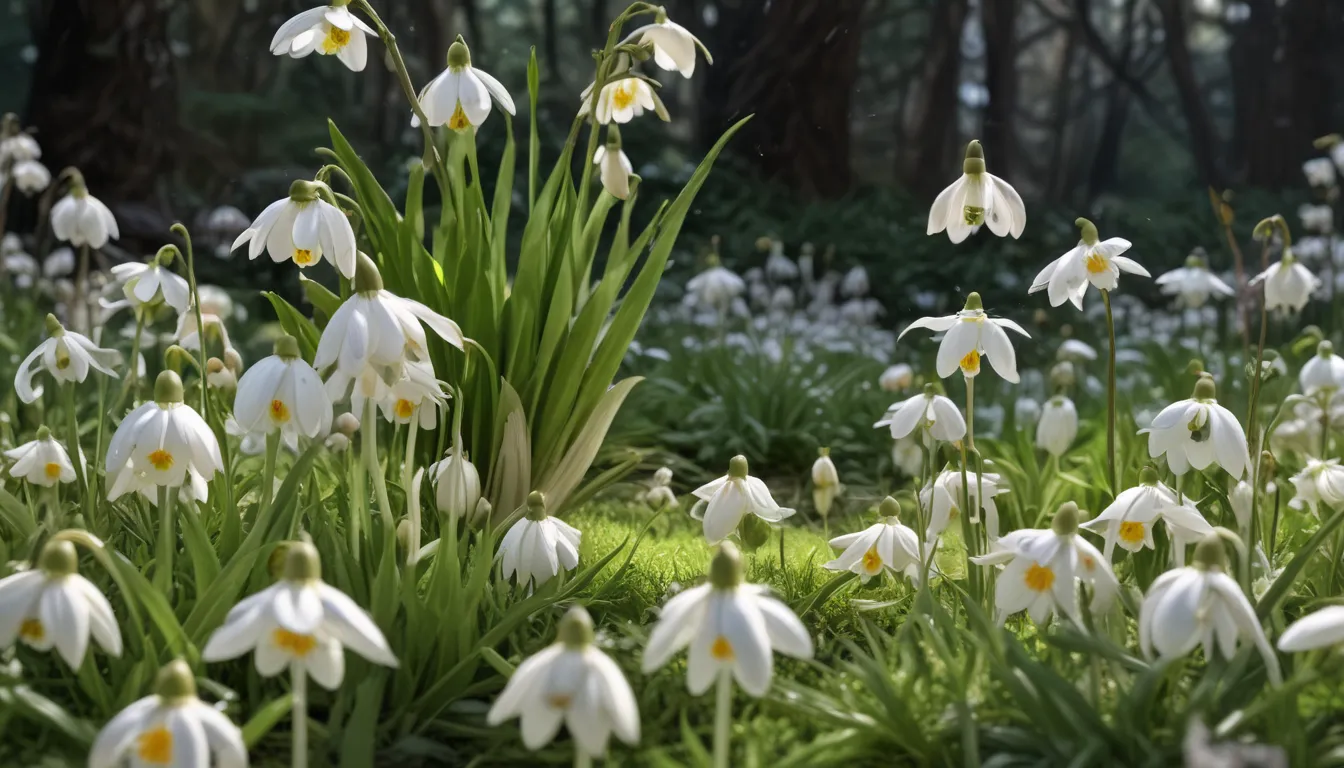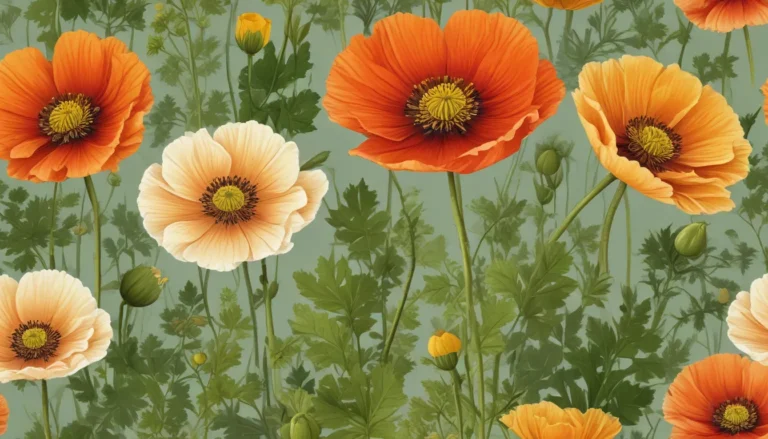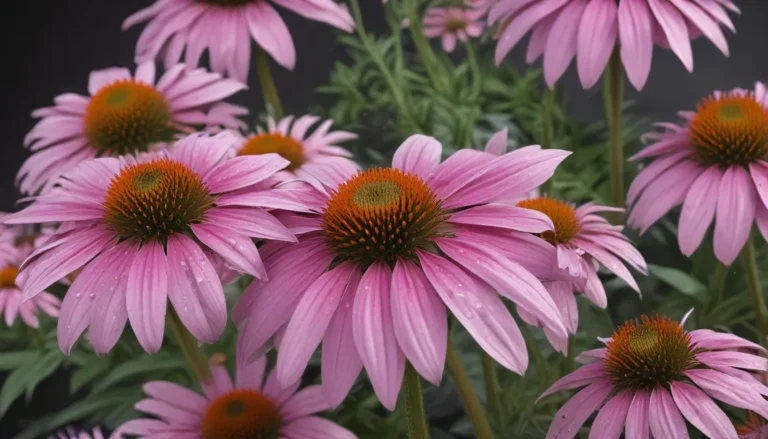The pictures we use in our articles might not show exactly what the words say. We choose these pictures to make you interested in reading more. The pictures work together with the words but don’t take their place. The words still tell you the important facts.
As winter fades away and the promise of spring approaches, the charming Galanthus, also known as snowdrops, emerges from the cold ground, symbolizing hope and purity. These delicate flowers may seem unassuming at first glance, but they hold a wealth of captivating beauty and remarkable characteristics that appeal to gardeners and flower enthusiasts worldwide. Join us as we delve into the enchanting world of Galanthus and uncover 19 astounding facts that will ignite your curiosity and appreciation for these beloved blooms.
Key Takeaways:
- Symbol of Hope and Purity: Galanthus, or the snowdrop flower, symbolizes hope and purity, blooming in late winter with unique white petals.
- Cultural Significance: These flowers hold cultural significance, are associated with cleanliness and renewal, and play a role in medicinal practices.
- Passionate Hobby: Collecting different varieties of Galanthus is a passionate hobby for many enthusiasts, with rare bulbs fetching high prices.
- Naturalizing Plant: Galanthus bulbs have the ability to multiply over time and naturalize, spreading and establishing themselves in suitable conditions.
Unveiling the Enigmatic Galanthus: 19 Fascinating Facts
- Also Known as the Snowdrop Flower: Galanthus, the snowdrop flower, is a small, delicate perennial plant native to parts of Europe and Asia.
- Symbol of Hope and Purity: The snowdrop flower symbolizes hope, purity, and the arrival of spring, signifying new beginnings and the end of winter.
- Considered a Bulbous Plant: Galanthus plants grow from bulbs, which serve as underground storage organs providing necessary nutrients for growth.
- Blooms in Late Winter or Early Spring: One of the first plants to bloom after winter, Galanthus' delicate white flowers adorn the landscape as early as late winter.
- Unique Flower Shape: Featuring three outer petals and three shorter inner petals with distinctive green markings, Galanthus flowers exhibit a unique and elegant structure.
- Diverse Species: With approximately 20 recognized species, each Galanthus variety offers unique characteristics, variations in flower shape, and size.
- Hardy Plant: Thriving in cold temperatures and cooler climates, Galanthus plants can be found in woodlands, parks, and gardens, showcasing their resilience.
- Medicinal Properties: Traditional medicinal uses of snowdrop plant parts include treating headaches and nerve pain, highlighting its potential health benefits.
- Attractive to Pollinators: Galanthus serves as an important source of early-season nectar and pollen for bees and other pollinators, supporting ecosystem diversity.
- Cultural Significance: Celebrated in various cultures, the snowdrop flower symbolizes purity, hope, and the triumph of light over darkness, embodying diverse meanings.
- Passionate Hobby: Collecting different Galanthus varieties is a cherished hobby among gardeners and plant enthusiasts, with rare bulbs commanding high prices.
- Association with Cleanliness: Long associated with cleanliness, freshness, and renewal, the pure white blooms of Galanthus evoke a sense of purity and rejuvenation.
- Woodland Habitat: Thriving in woodland environments, Galanthus plants often form clusters under trees in shaded areas, enhancing their natural beauty.
- Bulb Multiplication: Galanthus bulbs possess the unique ability to multiply and produce offsets, leading to larger clumps of flowers over time.
- Naturalizing Plant: Planted in suitable conditions, Galanthus bulbs naturally spread and establish themselves, creating picturesque displays in gardens.
- Biodiversity Support: By attracting pollinators and providing a food source for insects and animals, Galanthus contributes to biodiversity in gardens and natural habitats.
- Symbol of Hope and Renewal: Throughout history, Galanthus has symbolized hope and renewal, heralding the arrival of spring and brighter days ahead.
- Global Gardener's Favorite: Loved by gardeners worldwide for their beauty and resilience, Galanthus is a popular choice for winter and early spring displays.
- Celebrated in Festivals: The blooming of Galanthus is commemorated in various festivals and events worldwide, uniting people in appreciation of its beauty and symbolism.
Unraveling the Mysteries of Galanthus
In conclusion, Galanthus, the enchanting snowdrop flower, captivates with its delicate beauty, rich symbolism, and fascinating characteristics. From its resilience in harsh temperatures to its medicinal properties and cultural significance, there is much to admire about these beloved blooms. Whether you're an avid gardener seeking to enhance your winter landscape or a nature enthusiast marveling at the wonders of the plant kingdom, Galanthus is a captivating plant that should not be overlooked. Join us on a journey to explore the mysteries of the snowdrop flower and uncover the magic it brings to our world.
Frequently Asked Questions
- Meaning of the Name Galanthus: The name "Galanthus" originates from the Greek words "gala" (milk) and "anthos" (flower), reflecting the white color of the flowers.
- Blooming Timeline of Snowdrops: Snowdrops typically bloom in late winter or early spring, varying based on regional climate conditions.
- Toxicity to Pets: Snowdrops are toxic to pets if ingested, containing toxins that may cause gastrointestinal issues and other symptoms.
- Indoor Cultivation: Snowdrops can be grown indoors in pots after experiencing a period of cold dormancy.
- Galanthus Species Diversity: Several species of Galanthus exist, with Galanthus nivalis being the most common variety.
- Ease of Growth: Snowdrops are generally low-maintenance plants, thriving in well-drained soil and partial shade, with the ability to naturalize over time.
As we journey through the captivating world of Galanthus, let the delicate beauty and rich symbolism of snowdrops inspire you to appreciate the wonders of nature and the resilience of these remarkable plants. With each bloom, Galanthus reminds us of the promise of spring and the renewal that comes with each new season. Embrace the enchantment of the snowdrop flower and celebrate its intrinsic beauty that captures the hearts of gardeners and nature enthusiasts around the globe.






